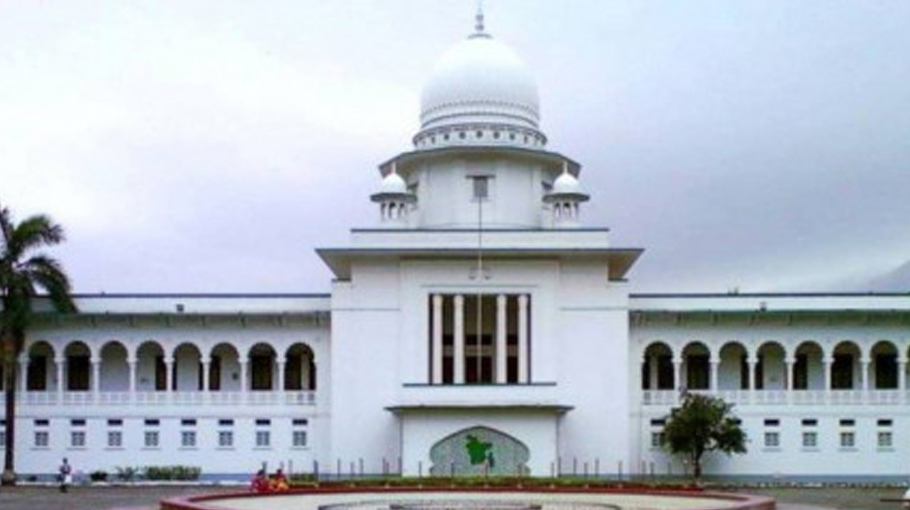HC asks lawyers to file writ petition over Uttara girder fall

The High Court (HC) has advised three lawyers of the Supreme Court to file a writ petition over the incident of a girder falling on a private car on Jasim Uddin Road at Uttara in the capital that claimed five lives.
The HC bench of Justice Md Mozibur Rahman Mia and Justice Khizir Hayat gave this suggestion to the lawyers on Tuesday when the three lawyers drew the attention of the High Court to the incident.
The three lawyers-- Barrister Sayed Mahsib Hossain, Advocate Jamiul Haque Faisal and Advocate Md Shahinuzzaman-- sought a suo moto order from the higher court in this regard. Then the court asked them to file a writ petition, saying they will hear it.
Earlier on Monday, five passengers of a private car were killed as a 50-60 tonnes girder of BRT (Bus Rapid Transit-3) Elevated Expressway fell on the car at Uttara in the capital.
Two passengers – a newly married couple Rezaul Karim Hridoy, 26 and Riya Akter, 19 – were rescued alive, but the rest of the passengers of the private car– Jharna Akter, 27, her two children Zakaria, 4, and Jannat, 6, and Hridoy's father Ayub Hossain Rubel, 55, and Riya Akter’s mother Fahima Akter, 38, died on the spot.
A case has been filed with local police station over the incident. Afran Mondal Babu, the brother of deceased Fahima Akhtar and Jharna Akhtar, filed the case under sections 338 (causing grievous hurt by act endangering life or personal safety of others) and 304 (causing death by negligence) of the Penal Code with Uttara West Police Station on Monday midnight.
The project to create separate lanes for specialised buses across an area of about 20-km from Gazipur to the Airport area in Dhaka is being implemented by three government agencies-- the Roads and Highways Department (RHD), the Bangladesh Bridge Authority and the Local Government Engineering Department. Three project directors are in charge of coordinating the work of the three agencies.
The project work that started in 2012 as part of the plan to finish the construction of the BRT by 2016 has not been completed by one-third in 10 years. During this time, both the project completion tenure and cost have doubled.




